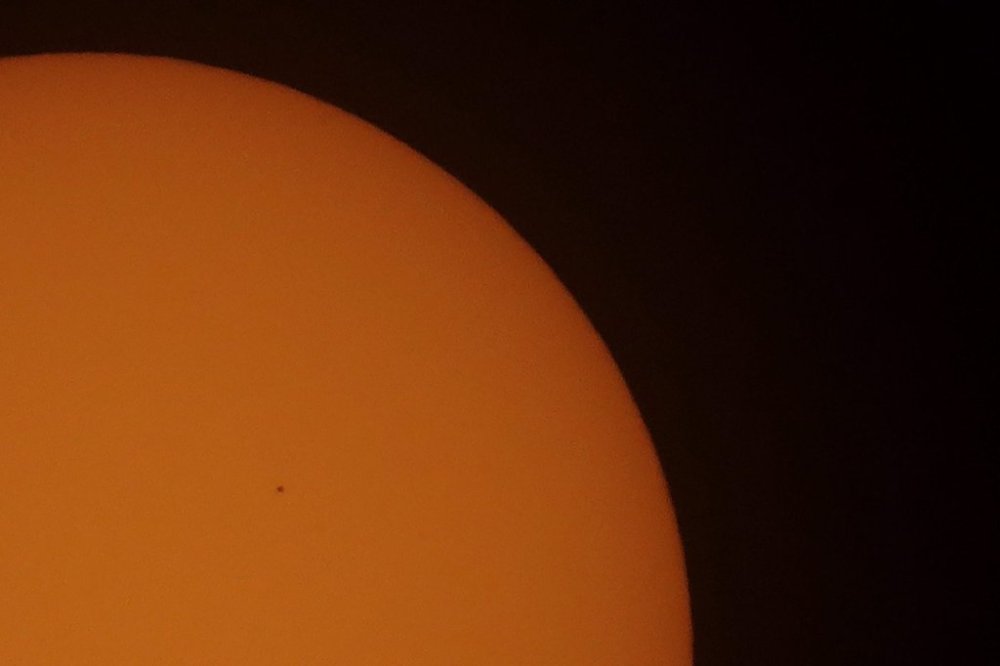Canadian-led study sheds new light on planets forming in ‘cosmic nursery’
Advertisement
Read this article for free:
or
Already have an account? Log in here »
To continue reading, please subscribe:
Monthly Digital Subscription
$1 per week for 24 weeks*
- Enjoy unlimited reading on winnipegfreepress.com
- Read the E-Edition, our digital replica newspaper
- Access News Break, our award-winning app
- Play interactive puzzles
*Billed as $4.00 plus GST every four weeks. After 24 weeks, price increases to the regular rate of $19.00 plus GST every four weeks. Offer available to new and qualified returning subscribers only. Cancel any time.
Monthly Digital Subscription
$4.75/week*
- Enjoy unlimited reading on winnipegfreepress.com
- Read the E-Edition, our digital replica newspaper
- Access News Break, our award-winning app
- Play interactive puzzles
*Billed as $19 plus GST every four weeks. Cancel any time.
To continue reading, please subscribe:
Add Free Press access to your Brandon Sun subscription for only an additional
$1 for the first 4 weeks*
*Your next subscription payment will increase by $1.00 and you will be charged $16.99 plus GST for four weeks. After four weeks, your payment will increase to $23.99 plus GST every four weeks.
Read unlimited articles for free today:
or
Already have an account? Log in here »
Hey there, time traveller!
This article was published 13/02/2025 (236 days ago), so information in it may no longer be current.
A new study offers a clearer picture of how planets are born alongside stars, findings that are an exciting step toward understanding the development of planets and their atmospheres, the lead researcher says.
Dori Blakely, a doctoral candidate at the University of Victoria, said researchers have known that planets form by pulling in mass from gas and dust left over from the formation of stars, a process known as accretion.
But the study Blakely led used a special setting on a Canadian-made instrument on the James Webb Space Telescope to zoom in on the phenomenon playing out in the later stages of two planets forming around a young star known as PDS 70.

The planets developed in the space between PDS 70 and its “pancake-like ring” of gas and dust known as a protoplanetary disk, he said.
Blakely said the young planets were discovered about five years ago, followed by the detection of what he described as “very cool dust” around one of them, pointing to the formation of the planet’s own circumplanetary disk.
The latest study, published in the peer-reviewed Astronomical Journal, goes further, finding what Blakely said was “convincing evidence” of warm dust nearby.
“We’re seeing material that is much closer to the planets, that is being heated up by emission from the planets,” he said.
The finding offers insights into the formation of planets roughly similar to Jupiter, along with their atmospheres and potentially the formation of their moons, he said.
“We think we’re getting into the region where exomoons might be forming,” Blakely said. “We don’t find evidence of that, but we’re starting to get a picture of what the structure of these circumplanetary disks looks like around these planets.”
The study is “not anywhere close to the final answer” about how planets and their atmospheres form, but it is an important step in the process, Blakely said.
“And to extend it a little bit, how planets might get molecules like water in their atmospheres,” he added.
It also marks the first direct detection of exoplanets — those outside our solar system — using an approach called interferometry in space, Blakely said.
The research offers a snapshot of a “cosmic nursery” as planets compete for the material they need to grow, he said in a statement issued by the university.
The star at the centre of the study, PDS 70, is about five million years old — a toddler compared with Earth’s sun, which is more than 4.6 billion years old.
PDS 70 is located 370 light-years away from Earth. By comparison, the closest star to Earth besides the sun is about four light-years away, Blakely said.
“Of course these are only two examples, and we will need to observe many more young planets like this to get a full picture of what’s going on,” he said.
“But these two data points are starting to allow us to constrain how these planets come to be,” Blakely said.
This report by The Canadian Press was first published Feb. 13, 2025.


